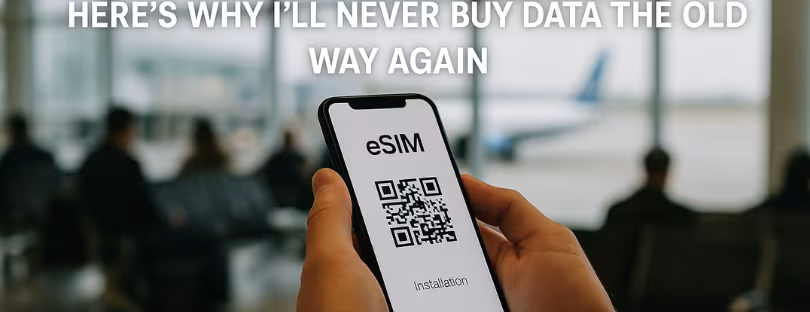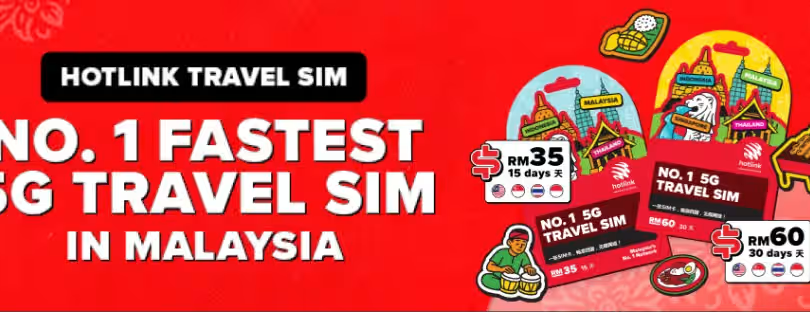
I Tested an eSIM in 5 Countries in 7 Days — Here’s Why I’ll Never Buy Data the Old Way Again
Travel always teaches you something new. Last month, I learned that I’ve been wasting time, money, and patience on mobile data every time I traveled abroad.
How? By testing an eSIM across five countries in just seven days. Spoiler alert: it completely changed the way I think about staying connected when I’m on the road.
This wasn’t a sponsored trip. I paid for the plan, set it up myself, and went in with a healthy dose of skepticism. Because let’s be honest: if you’ve been traveling for years, you’ve probably experienced the pain of SIM cards, airport kiosks, roaming charges, and that moment of panic when Google Maps won’t load in a new city.
Here’s what happened, and why I’ll never go back to buying data the old way.
The Setup: Why I Even Tried an eSIM
I’m a frequent traveler. My passport is basically a patchwork of border stamps, but my phone bill tells another story—roaming charges, overpriced airport SIMs, and hours wasted figuring out mobile networks.
I’d heard about eSIMs for a while, but I kept putting it off. My excuses?
- “It sounds complicated to set up.”
- “What if it doesn’t work in the country I’m going to?”
- “Do I really trust my entire trip’s connectivity to a QR code?”
But I had an intense travel week lined up: five countries in Europe, seven days, and no patience for hunting down SIM card shops at each stop. So I decided this was the perfect time to experiment.
Day 1: The Airport Test
Usually, I land, turn on my phone, and instantly feel my blood pressure rise when the roaming text from my provider comes through: “Welcome abroad! Calls €1.99/min, data €9.99/100MB.”
This time? I had my eSIM installed before boarding.
When the plane touched down, I switched off airplane mode, and—bam—LTE signal popped up before people even unbuckled their seatbelts. No queueing, no currency exchange, no “Sorry, we’re out of nano SIMs.”
It felt… weirdly futuristic. And freeing.
Day 2–3: Country Hopping Without the Usual Headaches
Here’s where I expected trouble. Would I need to buy another plan when I crossed borders? Would I lose connection mid-train ride?
Nope. My eSIM plan covered multiple countries, so the switch was seamless. As I crossed into the next country, my phone quietly connected to the local network. No pop-ups. No stress. Just signal.
This is where it hit me: this is how connectivity should have always worked.
The Old Way vs. The eSIM Way
Let’s pause for a second.
The old way looked like this:
- Land in a new country.
- Find a SIM card shop.
- Wait in line.
- Hand over the passport.
- Struggle with language barriers.
- Swap out SIM cards (and hope you don’t lose your home one).
- Manually top up credit or download a local app.
The eSIM way?
- Scan a QR code.
- Activate in settings.
- Done.
- It took me 2 minutes to set up before my trip. And that was it for the entire week.
Day 4: Stress-Test in the Countryside
City coverage is one thing, but I wanted to see how my eSIM handled the middle of nowhere.
On day four, I rented a car and drove into rural areas where my traditional SIMs used to choke. To my surprise, the eSIM latched onto a strong local carrier. No hunting for Wi-Fi, no “Can you send me the directions before I lose signal?”
It just worked.
Day 5–6: The Real MVP — Instant Data Top-Up
By day five, I was chewing through data—maps, translations, Spotify downloads. Normally, this is when the panic starts: Do I have enough left? Where’s the nearest kiosk?
Instead, I just opened the eSIM app, tapped “Top Up,” and had more gigabytes within 60 seconds. No cash. No contracts. No stress.
It was like refilling a digital wallet.
Day 7: The Airport Goodbye Moment
Here’s the thing: with physical SIMs, I always ended a trip in some awkward ritual. Either I was digging out my home SIM from a hotel drawer, or I was stuck at the airport kiosk one last time, fumbling with adapters.
This time? Nothing. I landed back home, toggled my primary line back on, and went straight to ordering coffee.
I didn’t even realize until later that I’d skipped the usual headache entirely.
So, Was It Perfect?
Not exactly. I’ll keep it real:
- Battery life decreased slightly when my phone was switching between networks.
- I had one patchy hour on a cross-border train ride where the connection lagged.
- And yes, you need an eSIM-compatible phone (not everyone has one yet).
But compared to the old way? Those were tiny trade-offs.
What This Experiment Taught Me
By the end of the week, I realized the eSIM wasn’t just a cool gadget—it was a mindset shift.
It taught me that:
- Convenience matters. Travel is stressful enough; why add data drama?
- Flexibility wins. One QR code gave me freedom across borders.
- Time is priceless. I didn’t spend a single minute hunting for a SIM shop.
Most importantly, I finally felt like my connectivity kept up with the way I actually travel. Fast, spontaneous, borderless.
Will I Ever Buy Data the Old Way Again?
Honestly? No.
This one week broke a decade-long habit. I used to accept the pain of SIM cards and roaming as “just part of travel.” Now I know better.
I’ll still carry a backup SIM in case of emergencies, but my go-to will always be an eSIM. It’s faster, smarter, and—let’s face it—just feels like travel in the 21st century.
Final Thoughts about my eSIM travel test
If you’ve been on the fence about trying an eSIM, take this as your sign. I waited too long, and once I finally tested it across five countries in seven days, I realized how much easier my trips could have been all along.
Travel should be about exploring new places, not battling with mobile data. And once you switch to an eSIM, you’ll wonder why you ever did it differently.
- AIRALO
-
eSIM for
Europe
39 countries
-
1 GB – 7 days – €4.27
3 GB – 30 days – €11.09
10 GB – 30 days – €31.57
- AIRHUB
-
eSIM for
Europe
34 countries
-
1 GB – 7 days – €2.99
3 GB – 30 days – €5.12
10 GB – 30 days – €11-09
- aloSIM
-
eSIM for
Europe
32 countries
-
1 GB – 7 days – €5.00
3 GB – 30 days – €13.00
10 GB – 30 days- €36.00
- GigSky
-
eSIM for
Europe
36 countries
-
1 GB – 7 days – €6.99
3 GB – 15 days – €11.19
10 GB – 30 days – €27.99
- iRoamly
-
eSIM for
Europe
39 countries
-
1 GB – 7 day – €6.83
3 GB – 15 days – €10.24
10 GB – 30 days – €18.77
- Maya Mobile
-
eSIM for
Europe
34 countries
-
1 GB – 7 days – –
5 GB – 15 days – €5.99
10 GB – 30 days- €13.99
- NOMAD
-
eSIM for
Europe
36 countries
-
1 GB – 7 days – €4.71
3 GB – 15 days – €10.27
10 GB – 30 days – €15.41
- UBIGI
-
eSIM for
Europe
29 countries
-
500 MB – 1 day – €2.00
3 GB – 30 days – €8.00
10 GB – 30 days – €19.00
- VOIA
-
eSIM for
Europe
34 countries
-
1 GB – 7 days – €2.69
3 GB – 15 days – €5.05
10 GB – 30 days- €11.70
The Best eSIM Finder brings together 100+ providers in one place, giving you a clear view of everything from data limits and business options to tethering, crypto payments, coverage, travel extras, refund policies, discounts, and reviews—so you don’t just compare plans, you understand which one truly fits your needs. Start exploring today and find the plan that fits you best.



















